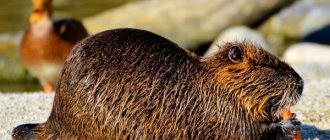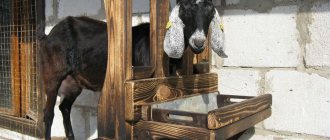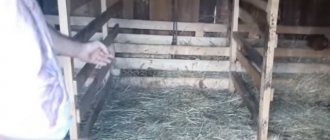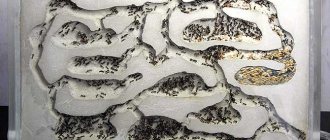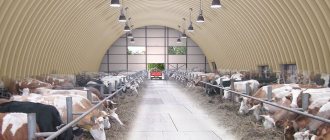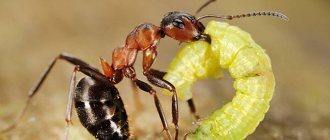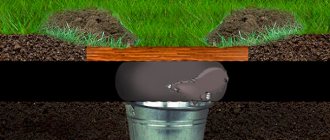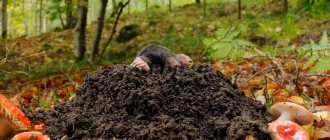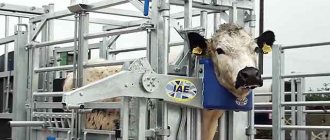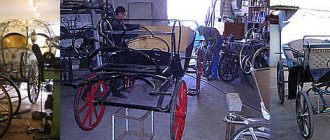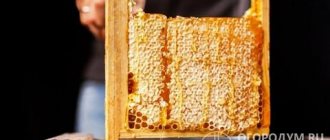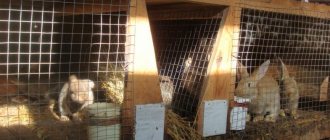Breeding nutria as a business (profitable or not): business plan.
Before starting the construction of a medium or large farm, it is necessary to make the appropriate calculations, which constitute a feasibility study and technological justification for the organization and construction of a nutria farm.
For medium and large farms, it is carried out by specialists in accordance with the standards of technological design of fur and rabbit farms (ONTP 3-35).
It is important to take into account local conditions: prices for feed, cage nets and other building materials, prices for skins, nutria meat, and more.
For small farms, the fur farmer also needs to calculate the economic efficiency of nutria farming on his farm.
To build a farm, it is necessary to select a plot of land with a relatively flat topography and slope for drainage of surface water, dry, protected from prevailing winds and gentle drifts.
You can use existing unoccupied livestock buildings originally intended for animals of other species.
The site for the construction of a nutria farm must be located at a distance of at least 300 m from livestock farms and residential buildings, and 1500 m from industrial complexes.
Considering that, in terms of the reliability of power supply, nutria farms in enclosed spaces belong to consumers of category II, and feed shops, points for primary processing of skins and meat, refrigerators - to category I, it is advisable to locate it on the territory adjacent to the central estate of the farm for the use of general utility communications (heat supply, electrification, water supply, sewerage, telephone, etc.).
In accordance with existing standards, the following land area must be allocated for the construction of a nutria farm:
- for 500 females of the main herd - 0.7 hectares;
- per 1000 – 1.3;
- for 2000 – 2.5;
- for 6000 – 5.5-6.0 hectares.
The farm area is fenced off even before operation begins.
Breeding nutria on a farm: pros and cons
Farmers do not often breed nutria in their households, but if the mini-farm is built correctly and simple recommendations for caring for the animals are followed, this area of animal husbandry can be profitable.
- The main advantages of raising nutria yourself on a farm are listed below:
- animals are omnivores and do not require special feed;
- high taste characteristics of meat;
- excellent presentation of animal skins;
- the ability to independently prepare plant food for the winter;
- high immunity to diseases under proper conditions;
- excellent fertility of female nutria;
- high profits from the sale of fur, meat and fat of rodents;
- rapid growth of young animals.
Did you know? The homeland of nutria is South America, and the first farms for breeding these animals appeared at the end of the 19th century. on the territory of Argentina.
- The disadvantages of this area of livestock farming are:
- unattractive appearance of rodents;
- the complexity of setting up a farm;
- the need for frequent cleaning in the cage with nutria;
- difficulties in finding a market for selling finished products.
To reduce the risk of failure, before starting to breed nutria yourself, it is recommended to find buyers to sell the meat and fur of these animals.
Drawing up a business plan
Any business begins with choosing a goal and drawing up a plan, and organizing a nutria farm is no exception to this rule. Growing nutria as a business involves not only obtaining fur, but also dietary, tasty and expensive meat. In Europe and the USA, a kilogram of nutria meat is more expensive than beef and pork. In Russia it is still a delicacy, but many restaurants and health food stores buy it with great pleasure. An important factor in starting a successful business is having experience or an experienced advisor. If you don’t know anyone who already keeps nutria, you can read the information on the Internet, as well as visit several nurseries and talk with breeders.
Also, before deciding to breed nutria, it is necessary to agree on the subsequent sale of products: meat and fur.
Next, you need to decide which method of breeding animals to give preference to. It depends on the number of livestock. If the livestock is large (more than 500), then it is better to organize cage housing. Smaller numbers can be kept in enclosures or pits. If winters are not snowy and warm, then aviary maintenance can be carried out throughout the year. During cold winters, a warm barn with cages is needed.
A business plan must take into account several points:
- Selection of land (purchase or lease).
- Coordination of necessary veterinary and other documentation.
- Construction of enclosures, sheds, food warehouses.
- Digging a reservoir (if kept in an enclosure).
- Landscaping.
Also, when drawing up a business plan, it is necessary to determine the number of females in the main breeding herd. Based on this, the land plot is selected. So for a breeding herd with a number of at least 500, a plot of 0.7 hectares is sufficient, which will accommodate about 3,000 places for young animals. If the number of females is more than 1000, then an area of 1.3 hectares or more will be required.
A large farm is more profitable and pays for itself faster, but requires:
- Auxiliary buildings,
- Good access roads,
- Permanent water supply,
- Places for disposal of faeces and sewage disposal,
- Electricity,
- Hired workers and housing for them,
- Initial capital.
When the herd numbers one or more thousand females, it is necessary to consider the issue of organizing your own feed shop and feed warehouse, an animal slaughter and meat storage unit, and a quarantine unit. To assess how profitable it is to breed nutria, you can familiarize yourself with the performance indicators of animals with proper maintenance. The annual yield of skins from 100 females will be at least 900 pieces, from 1000 females - 9000 pieces minimum, the annual yield of meat will be at least 18 and 180 centners.
A small farm can be serviced by two workers, but to service a herd of 1000 animals, at least 10 people must be hired.
Selection of site for construction, dimensions, drawings
Before building a farm for nutria, you need to choose a suitable place for it, where you can rationally place the cells. It is important to take into account the planned number of individuals and the approximate location of the cells.
The basic requirements for a place for breeding nutria are listed below:
- lack of direct sunlight - in the light, animal skins fade and lose some of their marketable qualities;
- protection from drafts - with prolonged exposure to cold air currents, nutria can get sick;
- a sufficient amount of free space - necessary for the free placement of rodents;
- absence of noise - nutria need silence, because when frightened they become aggressive;
- the presence of a reservoir with running water on the territory of the site - animals need access to water for bathing;
- close location of the area with vegetable and grain crops - this will make feeding the animals easier.
A small population of nutria can be kept outdoors, but in winter the animals must be kept in a heated room, so it is recommended to build a separate barn to organize a farm. Its size will depend on the number of animals and the number of tiers of cages.
Also familiarize yourself with the features of caring for pregnant and newly hatched nutria.
For example, to accommodate 3,500 nutria on two levels, it is necessary to build a room measuring 12x100 m with a ceiling height of at least 2.5 m.
On a nutria farm, the most commonly used method of keeping nutria is an enclosure method. To make such a home for animals yourself, you can use the ready-made drawing presented below. The design of the indicated sizes can contain up to 10 nutria.
Feeding Nutria
Nutria is a herbivore. The basis of their diet consists of plants, rhizomes, and young shoots of bushes. In nature, they prefer marsh plants. In conditions of breeding on a farm, plant foods also make up the majority of the diet, but they are also given various grain crops, mixed feed, and succulent feed (root vegetables, vegetables, fruits). In winter, grass is replaced with hay and dry branches.
One nutria can eat up to 1500 grams of plant food per day. However, when feeding concentrates with grass and hay, the animal requires no more than 200 grams of succulent feed. On small farms, nutria are prepared with a mash of soaked or steamed grain, bran, feed, boiled potatoes and vitamin supplements. Nutria are also given leftover cereals, pasta, various soups, bread and crackers, meat and fish waste. All vegetables and root vegetables are pre-washed and peeled, and especially large fruits are cut into two parts.
With a large population, it is more convenient and profitable to feed with special compound feed and grain.
In winter, grain needs to be sprouted and fed 15 - 20 grams for each individual. It is a good and natural source of vitamins and many minerals. When feeding mixed feed and grain, animals need constant access to fresh and clean water.
What should be on the farm
When breeding nutria, you need to make sure that the animals have everything they need on the farm. This will allow for high growth rates of young animals and prevent the occurrence of diseases. Setting up a farm for rodents will require some effort and time from the livestock breeder, but in the future it will bring profit, because in comfortable conditions, nutria reproduce very quickly.
Cells
Typically, a nutria enclosure is divided into separate zones, each of which has its own functions, and closing doors are installed between them.
Important! It is recommended to install a special tray under the cage for collecting manure - this will make cleaning near enclosures with nutria easier, and the collected manure can be used as natural fertilizer.
The cell consists of several parts:
- house with a roof - designed for animals to sleep and rest;
- walking - through this compartment animals can move freely from the house to the pool;
- pool - a container filled with water intended for swimming;
- channel - through it clean water is supplied to the pool.
1 - house; 2 - floor mesh; 3 - wooden frame; 4 — floor of the aft compartment; 5 - pool (trough); 6 — rear removable grille; 7 - roof over the paddock and pool; 8 - door; 9—grid; 10 — removable cover; 11 - side grille.
Room for females with newborn offspring
Newborns are with their mother during the entire lactation period, so a separate room must be prepared for them, in which the animals will be provided with complete peace.
The basic requirements for a cage for a female and her offspring are listed below:
- to keep 5–7 puppies together with a female, prepare a cage 1 m long and 0.8 m wide;
- the rear wall of the structure should have a height of 0.5 m, and the front wall - 0.7 m;
- the back and side walls of the house for the female and offspring are made solid so that the puppies do not catch a cold from drafts;
- in the cage with the newborn offspring there should also be a pool - the descent to it is made gentle so that the puppies can easily get out of the water and not drown;
- in the cold season, the cage with the female and puppies is kept in a heated barn at a temperature of about +20°C.
Feeders and drinkers
Nutria can fight with each other for food and water, so when setting up a farm you need to provide a sufficient number of feeders and drinkers for rodents. You can buy ready-made drinkers and feeders for nutria at a pet store or make them yourself.
Did you know? The average lifespan of nutria is 6–8 years.
The main features of nutria feeders and drinkers are listed below:
- the feeder can be made from a sheet of aluminum by cutting out a blank measuring 45x30 cm - sides 3 cm high are folded on three sides, and upper and lower stops 4 cm and 2 cm high, respectively, are made on the fourth side;
- the corners of the aluminum feeder are fastened with rivets, and a handle is attached to the bottom stop;
- a special hole about 3.5 cm high is cut under the cage door and a feeder is inserted into it;
- after the nutria have emptied the feeder, they pull it out and wash it;
- in winter, after feeding the animals, you need to close the hole cut out for the feeder with a flap to keep the cage warm;
- drinking bowls should be placed quite high from the floor so that rodents do not get their paws into them;
- the drinking bowl can be made from a plastic bottle or stainless steel by cutting out a hole in the central part corresponding to the size of the nutria head - it is fixed to the cage wall using metal wire;
- The edges of the drinking bowl must be absolutely smooth so that the animal is not injured.
Left: a - manger; b - container covered with mesh; c - drinking bowl-feeder; g - clay feeder; d - retractable feeder. On the right is a nod drinker: 1 - steel tube, 2 - rubber hose, 3 - guide bracket (a, b - manufacturing sequence), 4 - washer, 5 - dowel, 6 - pipe.
Air conditioning system
On a nutria farm, it is necessary to equip a ventilation system. It will avoid air stagnation and will also help control the air temperature in the room during hot weather.
The main features of the ventilation system in animal housing are listed below:
- 2 pipes of the same diameter are installed under the roof indoors, placing them with a slight difference in height;
- fresh air enters the room through a pipe located at a lower height from the floor;
- the recycled air is heated, rises to the ceiling, and then exits through the upper pipe;
- You can install a ready-made ventilation system under the roof of the animal shed - in this case, recycled air is removed from the room using electric fans built into the wall.
Heating system
In winter, animals should be kept at a comfortable air temperature, because during frosts rodents suffer from frostbite, and if they are in the cold for a long time they can get sick. If the cages are located outside in the summer, it is recommended to move them to the barn in the winter.
Important! The optimal temperature in a room with animals should not exceed +20°C.
In the cold season, an insulated, draft-free room with an air temperature of at least +14°C is suitable for keeping nutria. To do this, you need to install small batteries in the barn in the form of metal pipes with hot water. You can also use special cage batteries - each of them is designed for 3-4 cages with animals.
Agritourism in Tula: how the nutria farm in Ievlevo works
In recent years, Bogoroditsk and its surroundings have clearly moved closer to the top of the most popular areas for summer holidays in the Tula region. We found an “off-the-beaten-path” place here with an interesting idea - a nutria farm near the village of Ievlevo.
We asked its owner, local resident Dmitry Sadov, . He told what the quarries and forest in Ievlevo mean to him and how the idea of creating a farm came about.
See the beauty
Dmitry is an entrepreneur in the catering industry. But the nutria farm and where it is located, for him, as it is now fashionable to say, is “a place of power.”
“I am a Bogoroditsky myself, I live and work here—where I was born and have come in handy.” I’ve known this place for eight years, a friend brought me on vacation: “Dim, look how beautiful it is here!” And the beauty here is truly breathtaking! Pine trees, quarries with blue water, the air is amazing. We started coming here on vacation.
The quarries in Ievlevo are former mines. Previously, coal was mined here by open-pit mining; the territory belonged to Tulaugol. When the organization collapsed in the 1990s, the lands were transferred to the municipality. About the same story as with Konduks.
Dmitry says about Conduki, wincing slightly:
– In our circles, Konduki is a common noun, and with a negative connotation. It was a beautiful place that people literally trashed. And when they now took it over officially, Konduks lost their natural charm and identity. I desperately don’t want Ievlevo to repeat the fate of Kondukov.
Garbage collection in Kondukki during the “Water of Russia” campaign, 2022.
So, eight years ago I saw a huge amount of garbage here left by wild vacationers, but still managed to see the beauty in it. And we decided that this place cannot be left to be torn to pieces by people. They rented it just to save it - first two hectares, then another... In total, the territory here covers 112 hectares. In parallel with the paperwork, we were busy with cleaning - two KamAZ trucks took away only plastic bottles from here!
You can imagine what it’s like to register such lands: Dmitry and his friends literally went through fire and water. And as soon as this place became clean, people immediately appeared who wanted to take it over. Dmitry applied to lease municipal land, collected documents, and at the very last moment it turned out that they had managed to sell the plot to someone. It took us a long time to figure out this fraudulent scheme, but we succeeded – we won. The Bogoroditsk administration helped, for which Dmitry is very grateful to the specialists.
– It was precisely because all sorts of people had their eyes on this place that we had to buy out part of the site - rent is a precarious thing, but ownership is already an argument. So I became the owner of 2 hectares of land in Ievlevo. And everyone retreated. It's time to develop and improve this place.
Farming, but no longer rural
On July 2, 2022, amendments were adopted to the tourism law in Russia*, and a new concept appeared - “agritourism”, or rural tourism.
– This is very developed all over the world, a huge number of people live in cities, they are suffocating there. People need a break from the city, from the concrete jungle.
Previously, it was impossible to organize campsites, hotels, and so on on agricultural lands. The amendments introduced a new type of permitted land use.
According to Dmitry Sadov, initially there was no goal to make this a vacation spot for a large number of people. I just wanted to put up a house with a bathhouse, purely for myself, to come with my large family (Dmitry is a father of many children - Ed.) and with friends.
– In general, Ievlevo has always been a purely Mother of God corner, mostly locals rested here: they swam, came to pick up boletus in the pine forest, go fishing and pick berries.
But the summer of 2020 seemed to “open a portal.” June 12, the first anti-Covid restrictions, everything is prohibited everywhere, and Konduki is closed.
According to rumors, about one and a half thousand cars were simply turned away from there. And then, in some unknown way, people learned about Ievlevo. The M4 highway is nearby, and people literally poured out of there. I came here with my wife and three children, and here there are cars... I’ve never even seen license plates with such regions. I had nowhere to park.
I personally gave 18 thousand rubles to clean up the trash after this weekend (unfortunately, our people litter). And given that there were no containers, nothing was ready to receive such a number of vacationers, it was a mess.
So after the summer of 2020, it became clear that people had “tasted” the place.
“It’s a pity that people, when they realize that the territory is a draw, behave much worse than they could.” They drink, make noise, litter! It was necessary to somehow stop this and make people understand that they need to behave decently here.
It turned out that the entrance fee of only 100 rubles per person (kids are free) eliminates a huge number of people. The farm area has become cleaner and calmer.
This summer, Dmitry and his comrades began building large gazebos for relaxation with barbecues on the farm, organized a beach volleyball court, installed swings, and allocated an area for camping. So “a place for yourself” moved towards a business project and began to generate profit.
“It’s clear that you won’t make much money from this now,” says Dmitry Sadov. — The money earned goes towards cleaning, organizing and other expenses. And given the current prices for the same building materials, it is no longer easy to make “long-term” investments: to build even the simplest summer houses, serious investments are needed.
– There are also completely unplanned expenses. Recently, water began to drain from the nutria quarry; we had to strengthen the bank, install piles, and raise the edge.
Where did nutria come from?
About five years ago, Dmitry’s friend, Valentin, who breeds nutria, suggested releasing a couple of rodents into the quarry.
It turned out that to do this, you don’t need much: once building materials for the houses and regularly grain for food. Valentin brought a couple of nutria to the quarry. The animals were given houses in wooden tubs. In the summer, no predator would catch them on the water, but in the winter, on the ice, it turned out to be easy: a married couple of rodents were killed by either dogs or foxes.
Valentin brought two more nutrias, and the pond was fenced off with a net. And this couple has already multiplied.
– And now we are engaged in selection. They bring us nutria for exchange from other cities, in particular from Rostov and Volgograd.
It is no longer possible to count how many nutria there are on the farm now: gray, red, black, large and small - they swim for themselves, fattening up fat for wintering over the summer.
So rodents became another natural feature of Ievlevo.
“Children really like nutria,” says Dmitry. - Moreover, they live in natural conditions, they are comfortable here. You can pet the animals, but be careful not to scare them. But in general, nutria are accustomed to people and trust them. You can easily feed them; nutria love to eat. They are mainly treated to cucumbers, watermelons, other fruits, and bread. And “at home” they eat grains and vegetables.
Soon the quarry with nutria was replenished with geese and ducks and almost became a zoo. Only without cages and enclosures: you can watch living creatures in their natural habitat.
– Unfortunately, not everyone treats animals with care. We found rodent corpses here with traces of shotgun pellets - someone had hunted them. This is sad, because our nutria farm was created not for fishing, but for the pleasure of guests of Ievlevo. Nevertheless, nutria continue to breed and are even migrating—the animals have been seen in distant quarries.
Later, Dmitry and his friends stocked the same nutria quarry with fish. We launched classic breeds: carp, silver carp and grass carp - for fishing enthusiasts.
– We are waiting for them to grow up and multiply. This is the perfect place for them. We do not allow fishing here yet. It’s a pity that it’s not easy to stop some of our fellow citizens. In Bogoroditsk, a reservoir was stocked with fish, so people poured out with fishing rods to catch tiny carp, in which there was nothing to eat.
And they do this not because they are hungry, but because they belong to no one. And that is why I decided to save this piece of Ievlevo.
I don’t want to become Conduki!
Dmitry says that he does not plan to “launch civilization in Ievlevo” in full. The road to the resting place is now being slowly built, a well has been drilled for water, and electricity supply is in progress.
“I want this to remain a pristine place where many can come just to breathe and be in nature. A huge number of pensioners with children come to us to relax in the quarries and in the forest. Because it is clean, beautiful and almost untouched nature.
After your article, even more people will know about this place. But I just don’t know yet how to solve the “overpopulation” issue. I really don’t want to turn into Conduki!
Dmitry, his family and close friends are adherents of a healthy lifestyle and go in for sports. The head of the family himself is a representative of MIX Fight in the Tula region. And in Ievlevo, he and his friends hold regional volleyball competitions among amateurs, and everything is organized at a fairly high level. As he himself says: “We play for the Cup ourselves.”
– What do I like about the work I do? Joyful eyes of children. I would like to see families with children relaxing outdoors and looking at untouched nature. Yes, we don’t have comfortable houses, so a holiday on a farm is just a “fair weather holiday”.
I would like to organize summer sports camps, especially for children. Play sports in nature, feel this clean air, saturated with pine aromas, eat food cooked over a fire, sleep in tents. Replace time spent on gadgets with physical activity and unity with nature. As a father, I believe that this is simply necessary for our younger generation.
But I am pleased that grandparents with grandchildren and young families come to us. And, frankly, I really want them to form the basis of our audience. I am for a calm and clean family vacation.
I myself am like that and I want to see such people around me - responsible and decent, who love and take care of their native land.
I also really want to raise the prestige of the phrase “Russian person.” After all, a Russian is not someone who drinks and lies on the sofa and lives at random. This is a sober, strong, intelligent and fair person, a resident of a large and beautiful country. I want it to be like this!
I have an idea!
Dmitry has many plans. So, in one of the fields that he now has at his disposal, he plans to create a nursery for coniferous plants. And a difficult nursery, but also with an idea:
“Imagine how cool it would be if people could come here, dig up a small pine tree and plant their family tree in the field.” Let's make a sign with instructions. And people will come and watch their pines grow. And twenty years later - with children or grandchildren. You can plant an entire family forest!
There are also plans to add different types of living creatures. But not lions and bears, but local birds or farm animals. And at the same time develop the agritourism sector.
– I’m sure we have a future, because the main thing in tourism is to make a place “with soul”, so that people want to come here. I think we can do it.
reference
*Federal Law of July 2, 2021 N 318-FZ “On Amendments to the Federal Law “On the Fundamentals of Tourism Activities in the Russian Federation” and Article 7 of the Federal Law “On the Development of Agriculture”.
Russian legislation introduces the concept of rural tourism - tourism that involves visiting rural areas, small towns with a population of up to thirty thousand people, for the purpose of recreation, familiarization with the traditional way of life, familiarization with activities and (or) participation in agricultural work without obtaining material benefits.
Activities, including the provision of temporary accommodation services, leisure activities, excursion and other services, are carried out by agricultural producers in accordance with the requirements established by the Government of the Russian Federation.
At the same time, the support and development of rural tourism are included in the areas of state support for agricultural development.
The federal law comes into force on January 1, 2022.
Gallery
show all photos
Do you need a pool or pond?
In order for nutria to feel good and have beautiful fur, they need a pool. You can keep animals without it, but in this case they will be more susceptible to diseases, and the fur will partially lose its high commercial quality.
The basic requirements for a swimming pool are listed below:
- the pool can be made of concrete or wooden planks, covered on the inside with sheet iron and a layer of film, and you can also use metal containers of suitable volume;
- the capacity of the reservoir should be about 70 liters of water for each animal, and its depth should be at least 40 cm;
- the water in the pool must be changed at least every 48 hours - this will avoid the occurrence of diseases;
- There is a gentle descent to the pool from the walking area.
Financial indicators of nutria breeding
Breeding nutria as a business involves maintaining a large population of animals that will constantly renew itself, and a reliable market for the products. If the breeding stock consists of one hundred individuals, then the annual profit will be over 110 thousand rubles (sale of skins, meat), a livestock of 500 individuals will bring more than 600 thousand rubles in profit. The return on investment is three years.
If you purchase a broodstock of 500 individuals, then in two years you can make a profit of 1,000,000 rubles. When planning a business, it is important to remember that colored skins are many times more expensive than ordinary ones. The most expensive skins of the following breeds are recognized:
- Silver,
- Mother-of-pearl,
- Pearl,
- Lemon,
- White Azerbaijani,
- Smoky,
- Beige,
- Golden,
- Pearl,
- Pasteleva.
Many beginning breeders often have doubts about who is more profitable to breed: nutria, rabbits or muskrats.
The most prolific animal is the rabbit, but rabbit and muskrat skins and meat cost much less than nutria.
The muskrat also loses to the nutria in weight. On average, a high-quality rabbit skin can be sold for 250 - 300 rubles, a muskrat skin - for 350 -400 rubles, and the price for a standard nutria skin starts from 600 rubles. Particularly successful breeders with regular customers sell skins of standard nutria at a cost of 1,200 rubles, and colored ones - from 2,500 rubles.
An important factor determining whether it is profitable to breed nutria is their health. Unlike rabbits, they are less susceptible to various diseases, and young animals are resilient. The average price for nutria meat starts from 800 rubles per kilogram. Slaughter is carried out when the animal weighs at least 3.5 kg, and the meat yield is about 55%. The weight of an adult nutria can reach 12 - 15 kg, but it is not recommended to send breeding animals to slaughter.
You can also make money by selling live nutria. There is a particularly high demand for colored animals, which are bought both for breeding and as pets.
Cell arrangement diagram
Each farmer independently decides how to place cages with nutria indoors. In order to save space, enclosures on a farm are usually arranged in 2 or 3 tiers, but if desired, enclosures can be placed in 1 tier.
1 - walking; 2 - feeder; 3 — automatic drinker; 4 - stand.
The main features of the arrangement of cells in a nutria farm are listed below:
- if the livestock breeder has chosen to place rodents in 2-3 tiers, then enclosures are placed below to keep groups of animals, and the uppermost tier is recommended to be made up of single cages;
- the size of group enclosures can be 1×0.8×0.7 m, and single cages - 0.5×0.8×0.5 m;
- It is recommended to install inclined metal trays between adjacent tiers to collect urine and animal manure so that they do not fall from the upper cages to the lower ones;
- Each cage should be separated from neighboring enclosures by a door with a bolt so that individuals living nearby do not penetrate each other’s territory.
Basic conditions that should be taken into account when organizing a nutria farm:
- the presence of a land plot that meets sanitary, hygienic and technological requirements for the correct placement of main and auxiliary buildings and structures;
- ensuring the construction of access roads and tracks;
- complete uninterrupted supply of animals with food in accordance with the standards, preferably of our own production or inexpensive purchased ones;
- the presence of a feed workshop equipped with the necessary machines in working condition;
- availability of uninterrupted drinking water supply;
- rational use of wastewater and manure from nutria without polluting the environment;
- provision of production resources (necessary labor, electricity, fuel, etc.) and sources of financing.
According to the project, the farm for 1000-2000 females includes the following buildings and structures: premises for keeping the main herd:
- poultry house for 1000 paddocks (1-2 pcs.);
- buildings for young animals, for approximately 500 paddocks (2-4 pcs.);
- feed shop with dry feed warehouse (1);
- slaughterhouse with slaughterhouse and refrigerator for edible meat (1);
- sanitary block for 10-20 people (1);
- office block (1);
- disinfection unit for transport (1);
- veterinary clinic (1);
- auto-weighing (1);
- transformer substation (1);
- disinfection barrier (1);
- saved manure by 1000 tons (1).
On smaller farms, the number and volume of these premises and structures are reduced accordingly.
For example, on a farm of 500 females there is one room for the main herd and young animals, next to it there is a feed shop for preparing wet mash, etc.
Nutria produces two main types of products - skins and edible meat; In total revenue, the share of skins is 80-85%, meat – 15-20%.
The approximate structure of the cost of nutria products: feed and their preparation - 55-60% (main costs), wages 15-20, depreciation of buildings, cages and equipment - about 15 and overhead costs - 10%.
DIY instructions
Ready-made cages for nutria can be purchased in special stores, but in order to save money, you can make them yourself. Before starting work, it is necessary to prepare a drawing, and the dimensions of the finished structure will depend on how many individuals it is planned to contain.
Video: what to make a nutria cage from
To make an enclosure according to the drawing presented in this article, the following tools and materials are needed:
- concrete and metal pipes;
- metal grid;
- boards;
- slate;
- a bag of sand and cement;
- plywood sheets;
- hammer;
- nails;
- Bulgarian;
- welding machine;
- wire cutters;
- galvanized metal sheet;
- screwdriver
Did you know? The female nutria has nipples located high on the sides, so she can feed her pups even in water.
A step-by-step algorithm for making an enclosure for nutria is presented below:
- Using nails and a hammer, knock together several boards for the frame, following the drawing above.
- Dig holes in the ground about 1 m deep. Lower concrete pipes into them vertically and fill the holes with a solution of cement and sand. Wait until the mixture dries completely.
- Weld metal pipes to the vertical supports. Place the mesh on them and secure it using a welding machine. To make the structure stable, weld diagonals between the supports.
- Connect the frame and the resulting metal structure using screws.
- Install the metal mesh on the inside of the cage using a welding machine and wire cutters. Make doors.
- Cut suitable sized pieces of plywood for sheathing. Place them outside the cage close to the mesh.
- Apply a layer of insulation on top of the sheathing, covering it from the outside with another layer of plywood. Secure all elements with screws.
- For the ceiling, cut a piece of metal mesh of the required size. Attach it to the finished structure using a welding machine, and then cover it with slate.
Video: how to make multi-tier cages for keeping nutria and rabbits with your own hands
Cages for young nutria
Young nutria are kept in cages of the same design as adults. But at the same time, the dimensions of such structures should be 3 × 2.5 × 0.8 m. To keep a group of 10–15 puppies, it is also necessary to increase the length of the house by 2–3 times so that the young animals do not feel too crowded. If there is a reservoir with running water and free space on its shore, puppies can be kept in a pen in the summer.
Did you know? While swimming in a pond, nutria can dive and remain underwater for up to 10 minutes.
The rules for its arrangement are listed below:
- use a metal mesh to fence off an area of at least 30×10 m in size, one part of which is located in the water;
- the height of the fence must be at least 1 m, and for a person to enter, one lockable door must be installed in it;
- the mesh is securely attached to vertical supports - metal posts dug into the ground;
- to prevent animals from escaping, the lower part of the mesh is dug into the ground to a depth of 40 cm;
- a canopy about 30 cm wide is installed on the top of the net to prevent young animals from climbing over the fence;
- On the territory of the pen, a rain shelter and a feeding area measuring 4x2 m will be installed, filled with concrete.
Video: NUTRIA CELLS FOR FATTERNING YOUNG CATTLES
Arranging a channel near the cells
To facilitate access of water to the cages with nutria, a distribution channel is installed on the farm.
It connects the main source of water to each cell, and the basic rules for its arrangement are as follows:
- ditches 80 cm deep are dug perpendicular to the distribution channel;
- the width of the lower part of the recess should be about 0.5 m, and the upper part - 2.5 m;
- the inside of the ditch is covered with a small layer of concrete and allowed to completely harden;
- Along the resulting depression, along its entire length, cages with nutria are installed so that the water in the ditch is evenly distributed to each cage.
Did you know? Nutria's incisors grow continuously throughout their life.
Walking area
A separate area that is necessary in a nutria enclosure is the walking area. It is designed for free movement of animals, since nutria need movement to feel normal.
The main features of arranging a walking area for nutria are listed below:
- the length of the walking area can be 1–2.5 m, and the width - 0.8–1.4 m;
- it is recommended to concrete the floor in this area and cover it with a layer of straw bedding;
- the walking area should be connected to the cage using a door about 22 cm high;
- a fence up to 0.5 m high is made around the paddock, and the upper part of the structure is covered with a metal mesh so that rodents do not run away;
- you can build an open paddock without a roof, but the height of the side walls should be 0.8 m, and a canopy with a width of at least 30 cm should be installed on their upper part;
- on the second side of the walk there is a gentle slope to the pool.
Semi-free breeding
If there is a reservoir near the farm and a sufficient amount of free space, it is possible to organize semi-free keeping of nutria. At the same time, the animals are not limited by the walls of the enclosure and receive much more space for walking and swimming, and in the summer they can independently feed on grass within the fenced area.
In semi-free breeding of animals, several hectares of shallow pond with marsh vegetation are separated near the farm using a mesh fence. Insulated rooms are set up on the shore in which nutria can spend the winter, and additional feeding is left in special places.
Keeping nutria without ponds
If the livestock breeder does not have the opportunity to equip a swimming pool for the nutria, and there is no pond near the farm, then you can periodically place a small bathtub in the cage for swimming. For large numbers of animals, it is recommended to use portable rodent houses.
Important! If there is no reservoir, you can water the animals from the shower 2 times a day - the duration of each such procedure should be 15–25 minutes.
The main features of their use are listed below:
- in winter, the houses are placed along the wall in the barn, insulating the outside with the help of thick wooden panels - the space between them and the houses is filled with peat or straw;
- a mesh walkway is installed on the outside of the barn, connecting it to the houses using a concrete pipe passing through the wall of the barn;
- the floor of the walk should be raised 35–40 cm above the ground surface, and a container with clean snow should be placed inside;
- In summer, the structure is taken out to the reservoir - the houses are installed on the shore, and the paddock connected to them is lowered into the water at a slight slope.
Portable cage for nutria: 1 - rack for hanging paddocks; 2 - nesting compartment of the house with a mesh floor and a removable upper hatch; 3 — aft compartment with a solid floor; 4 - house pipe.
Nutria cage
Cages intended for housing nutria are built of concrete measuring 2.5 X 1.5 X 0.8 meters. The fourth wall of the cage is made of a metal mesh, which is embedded in the concrete side walls and lowered into the water so that it encloses part of the ditch for swimming and bathing of animals. The top of the mesh wall is bent with a canopy 30 centimeters into the cage, which protects the nutria from escaping. The concrete floor of the nutria cage slopes towards the water at an angle of 30 degrees. The floor serves as a walking area.
Drawing of a cage for keeping nutria
Photo of a cage for nutria
The cells are built on both sides of the ditch with a gap of half a meter between the opposing nutria cells. The house is also built from concrete, and its lid is made of wood and covered on the inside with metal mesh. The dimensions of the house are 0.6 X 1.0 meters, the height at the wall of the cage is 0.6 meters, and the height of the opposite wall of the house is 0.4 meters; a hole measuring 20 X 20 centimeters is built from the house into the cage.
Seasonal feeding habits
The basis of the nutria diet is plant foods, but animals also need vegetables and grain feed. They strengthen the immune system, have a beneficial effect on the condition of the fur and accelerate the rate of weight gain in young animals.
Important! At any time of the year, animals should be given daily about 150 g of cereals, 1.5 g of table salt, 30 g of grass meal and tree branches for grinding down teeth.
In summer, one individual should receive about 400 g of fresh grass per day. In winter, instead of fresh grass, each animal is given 400 g of beets per day.
| In addition, the diet of each nutria includes 100 g of nutrition containing the following components: | The need for all essential nutrients is satisfied by feeding, consisting of the following products: |
| cabbage - 25 g | barley – 20 g |
| carrots - 20 g | bran - 20 g |
| beets - 15 g | cake - 15 g |
| potatoes - 15 g | corn - 15 g |
| sugar beets - 10 g | fishmeal - 5 g |
| rutabaga - 10 g | soy flour - 5 g |
| silage - 5 g | vitamins - 2 g |
Mating
Young nutrias reach the age of puberty at 4–5 months , but in order to increase fertility, it is recommended to use females aged 6–8 months and males aged 7–9 months for breeding.
The female's readiness for mating is indicated by sexual heat, which appears every 24–30 days and lasts up to 1.5 days. To quickly reproduce on nutria farms, the schooling method is usually used.
Also learn how rabbits mate.
The main features of animal mating with this method of keeping are listed below:
- after the females reach the age of 2–3 months, they are selected into separate schools, grouping the animals according to similar external characteristics;
- for mating, a male not related to them is released into a school with females;
- one school can include 10–15 females and 1 male;
- every month the females in the school are examined in order to remove pregnant individuals;
- after giving birth, the female nutria is ready for re-mating within 2-3 days, but it is not recommended to immediately mate a nutria weakened after childbirth with a male.
It is recommended to place whelping females in a cage with a male for mating, as they can behave aggressively in a common group.
Video: when to place a male with nutria
Animal breeding
Nutria are capable of reproduction from the age of four months, but it is recommended to wait up to six months until the female gains weight above 3500 grams. Males are allowed to mate at seven to nine months and weigh 4500 grams. Otherwise, the offspring will be small and non-viable, and the male and female will stop developing and remain small and will not be fertile.
Pregnancy lasts about 132 days. Childbirth most often takes place at night and the female copes with the process of giving birth to puppies without outside help. The number of puppies in a litter depends on the breed and living conditions. With sufficient nutrition and good organization of the cell, a litter of ordinary nutria can have up to 14 babies, although more often about 10. The normal weight of newborns is 350 - 400 grams. Nutria of colored breeds are less fertile and, when crossed, produce no more than 7 - 8 puppies. To improve the fertility of female nutrias of colored breeds, they are mated with ordinary males. This litter produces an equal number of puppies of standard color and colored ones. The female is ready for a new mating within two to three days after giving birth. Nutria puppies are fed for about two months.
The most effective breeding method is the shoal method. It consists in the formation of a broodstock consisting of 10-15 females and one male.
The herd can be kept in one large cage or enclosure, where the minimum area for each individual is about 0.7 sq.m. With this type of housing, the animals themselves control the reproduction process. Within a broodstock, all females may be related, but a male should be selected without close kinship. The male is changed every 2-3 months.
Pregnancy and whelping
Pregnancy in nutria lasts from 127 to 137 days, and you can independently determine it at 1–2 months. To do this, the female is placed on a stand with her front paws, taken by the tail and led with the other hand along her stomach. If you are pregnant, you will feel small rolling balls under your palm.
Important! The pregnant female needs to be moved to a separate cage and provided with peace, since if she is under extreme stress or fear she may have a miscarriage.
The main features of nutria whelping are listed below:
- a few days before giving birth, the female loses her appetite;
- in the cold season, for whelping, the cage with the female is moved to a barn, maintaining a temperature of +15°C;
- a thick bedding of straw is laid at the bottom of the cage to keep newborn puppies warm;
- animals usually reproduce at night or early in the morning;
- childbirth lasts from 20 to 60 minutes - during this time the female should not be disturbed;
- on average, one litter contains 6–10 puppies weighing 400 g;
- females feed the cubs for about 2 months, after which the offspring must be placed separately from the mother.
Video: how to determine if a nutria is pregnant
Care of offspring
Puppies from the same litter, after leaving their mother, are kept in the same group or placed with other young individuals of the same age, recording the date of birth of each batch of cubs, the number of the female and the number of puppies in each litter.
Did you know? Nutria entered Russia in 1930 from Argentina.
The main features of caring for young animals are listed below:
- if there are too many cubs in the litter (8–10), then only 5–6 puppies are left with the female, and the rest are placed in a nest with another nursing nutria, whose litter contains 3–4 puppies;
- the first few days you need to protect the young from hypothermia and monitor the behavior of the puppies - lethargy and depression of the offspring may indicate a lack of milk in the female;
- at the age of 3 months, young individuals are divided into 2 groups according to gender;
- animals intended for further reproduction are sorted by fur color, degree of development and origin;
- When young animals are kept together, individuals that are too aggressive and have been injured in fights are placed in separate cages.
The profitability of the industry is determined by:
- price (cost) of concentrated feed;
- business output of young animals;
- selling price of skins and meat.
The business yield of young nutria with proper breeding and feeding should be 4.5 puppies per breeding round or 1.5-2 rounds in one puppy cage per year.
It is most profitable for households and farms to sell nutria skins processed into products (hats, collars, jackets, coats, etc.), since their price increases several times compared to the sale of unprocessed skins, but, unfortunately, the demand for finished products is much lower , I eat raw materials.
The profitability of nutria farming and the negotiated price of skins depend mainly on market prices for concentrates (grain), which have risen significantly since 2001. Let us give several examples of calculating the cost of nutria production and its profitability at different prices for commercial feed.
- First option. If the price of grain fodder is 3 rubles/kg, then the cost of feed for the production of one skin (20 dm2) and 2 kg of meat is: 3 rubles. x 47 kg = 141 rub. (60% of production cost). The full (100%) cost of one skin and 2 kg of meat is 235 rubles. At the same time, for example, the market price of one tanned nutria skin in the form of a product is 350 rubles. and 2 kg of meat - 100 rubles, total revenue - 450 rubles. Profit from sales of products: 450 – 235 = 215 rubles Profitability 215x 100% 235 = 91.5% (excluding taxes). This is a fairly high profitability of the industry. It must be borne in mind that the price of raw, unprocessed skins is two times lower.
- Second option. If the price of feed is 5 rubles. /kg then the cost of feeding will be 235 rubles; total cost of production - 392 rubles; revenue for skin and meat - 450 rubles, profit - 58 rubles. (profitability + 14.8%). This is low profitability; to increase it, it is necessary to purchase cheaper grain or increase the contract price for products. In order to increase the profitability of nutria farming to 35%, it is necessary to increase revenue for skins and meat in the amount of up to 530 rubles. A good reserve for increasing the profitability of the industry is conducting selection and breeding work to obtain skins of rare colors and breeding young animals.
- Third option. If the price of feed or pellets for nutria is 10 rubles/kg, then the cost of feed is 470 rubles. per head, total cost - 785 rubles. When selling skins for 500 rubles. and 2 kg of meat for 100 rubles. – nutria farming will be unprofitable (-25%). To recoup costs and make a profit of +25%, you need to sell the skin for 850 rubles. and meat – 75 rubles/kg. In this case, the finished product, for example a hat made from two nutria skins, will cost approximately 2000-2500 rubles. taking into account the costs of dressing, tailoring and taxes. Such an expensive hat will be difficult to sell. Consequently, with high prices for commercial feed, breeding nutria becomes unprofitable.
The calculations assume that the yield of young animals per main female is 9 puppies, i.e., for two whelping rounds per year from two whelping females in one cage (4.5 x 2 = 9.0). The cost of concentrated feed is assumed to be 4 rubles/kg (60% of costs).
The contractual selling price of one skin is 360 rubles. (60 rubles x coefficient 6.0); 1 kg of meat – 50 rubles, or 2 kg – 100 rubles; total revenue – 460 rubles. With different farm sizes, the profitability of nutria farming ranges from 44 to 64%.
At other negotiated prices - for feed, building materials, nutria skins and meat, the profitability of the industry will be different. The sale of breeding young animals and skins of light colors (silver, pastel, white, etc.) significantly increases profits from nutria farming.
It is very profitable to engage in nutria farming, having courts grown on your own farm.
Thus, in the south of the country (Krasnodar and Stavropol Territories, Rostov Region), with a grain harvest of 50 c/ha and nutria demand for commercial feed of about 47 kg/skin, to produce your own grain you need to have approximately 1 hectare of arable land to raise 100-110 heads (skins) ), 10 hectares - for 1000-1100 nutria, etc.
In the central regions of the country, with lower yields, the need for land will be greater and the cost of grain will be higher.
To keep nutria indoors in the central zone, it is necessary to build permanent premises with heating during the cold period of the year, 6-7 months. (October-April).
In the south of the country, you can build lighter buildings, sheds, where the heating season is short, about four months (December-March). But in the southern zone, during the hot months, forced ventilation of enclosed spaces is required, especially with multi-tiered paddocks.
With proper organization of production, nutria farming is profitable both in the southern and central regions of the country, but on average the industry’s profitability ratio in the south will be slightly higher.
Diseases and prevention
During the process of breeding nutria, it is recommended to regularly examine the animals and monitor their well-being, because if there are errors in care, the rodents can get sick. A problem detected at an early stage is easier to treat and can significantly reduce animal mortality from disease.
The main diseases that occur in nutria are listed below:
- Bronchitis. The disease can affect rodents in winter if they are kept in the cold or are constantly exposed to drafts. Signs of bronchitis include sneezing and coughing, hoarse breathing, and mucus discharge from the animal's nose. For treatment, you need to eliminate the cause of the disease, and also use sulfonamides and antibiotics prescribed by a veterinarian.
- Ringworm. The disease occurs when sanitary standards for keeping rodents are violated, as well as when there is a lack of sunlight. On the skin of infected individuals, areas with falling hair form, which subsequently become covered with scabs and peel off. The affected areas are treated with a soap solution and then smeared with a 10% iodine solution. Specialized antifungal agents can also be used as prescribed by a veterinarian.
- Colibacillosis. The appearance of the disease is caused by errors in the sanitary care of the cells, as a result of which the causative agent of the disease enters the intestines of the animal. Symptoms of the disease include severe diarrhea with an unpleasant odor, refusal to eat and general exhaustion. Vitamins, antibacterial agents and special serum are used to treat colibacillosis.
- Salmonellosis (paratyphoid fever). This disease most often affects young animals, and its causative agent is a pathogenic bacillus that enters the animal’s body along with food or water. Infected rodents lose their appetite, lose weight and become lethargic, experience bloating, diarrhea and a short-term increase in body temperature. To treat salmonellosis, antibiotics are used, taking them for 2 months.
Important! To avoid the spread of infection, sick individuals must be quarantined and then the cells and equipment must be disinfected with a 4% formaldehyde solution.
To prevent the occurrence of these diseases, it is recommended to follow simple preventive measures:
- monitor the cleanliness of the cages and pool;
- provide animals with high-quality food;
- disinfect cells every 6 months;
- prevent the appearance of mice and rats near rodents;
- locate the nutria farm at a great distance from the manure pit;
- regularly vaccinate animals;
- quarantine new individuals for 30 days before introducing them to the rest of the population.
